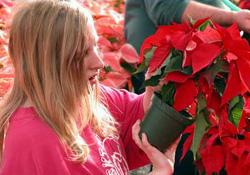Gardening is a wonderful hobby for adults and children with developmental needs. Gardening encourages perseverance and independence, as you must plant, care, and watch your plant grow. It is very rewarding to see your plant grow and mature. Gardening can be a great tool for physical therapy, problem solving, and a way to socialize all at once.
How to Plan the Garden
 When creating a garden for someone with developmental needs requires care and consideration. It may be prudent to create raised beds with clear paths, because this will avoid any confusion as to where it is safe to step.
When creating a garden for someone with developmental needs requires care and consideration. It may be prudent to create raised beds with clear paths, because this will avoid any confusion as to where it is safe to step.
Try to create paths that are made from smooth material, as this will help to avoid tripping. Paved walkways should be repaired when cracked or buckled. Make sure paths are wide enough and tools are not left out in them.
Gardening in a container or pot is also a wonderful idea. This allows the plants to be picked and examined more closely. It also clearly marks where the plant is so it cannot be stepped on. Make sure to use lightweight pots for gardeners who may have strength or coordination issues.
A garden should have all the appropriate tools available to gardeners. Also make sure the tools are appropriate for the person, children may need smaller versions of the adult counterparts. It may be important to have tools with padded handles as well.
It is important to remember to keep water hoses rolled up, and if possible it may be a good idea to simply use watering cans to avoid the hazard of tripping over unruly hoses. Teach gardeners to put away tools that they are not using so accidents do not occur, and this also keeps the grounds tidy.
What should you plant
Try to incorporate plants that will bloom or fruit fairly quickly, as this will reward the gardeners quickly, keeping those with developmental needs interested in the process. Allow each participant to choose one or two plants that belong to them, this creates an emotional and personal bond with the project.
For persons with vision or coordination problems, try to use large seeds that they can easily see and plant. This will keep away frustrations.
Try to remember that some plants are sturdier that others. It is not necessary to plant easy plants only, but instead try to create a mixture of fragile plants with plants that are easy and sure winners as well.
Make the Most of Your Garden
To create a successful gardening session, plan to have short gardening sessions with many breaks. Make sure to have plenty to drink as well as snacks for your gardeners. This will keep your gardeners focus and keep them from making too many trips inside.
Remind your gardeners of how important their task is, so they see how their plant fits into the larger scheme of life. Gardeners will be more likely to complete mundane tasks like wedding and watering, when they understand that these tasks are necessary to allow their plants to thrive.
Use your Products
Help to instill a love and passion for gardening by using what is produced in the garden. Pick flowers and create a stunning floral arrangement for a table centerpiece or pick petals and create a stunning art project. Cook or preserve vegetables, or give as gifts to neighbors. Make sure to remind the person with developmental needs that you are using what they grew, as they will find a special reward in the realization that they grew the item you are using!
